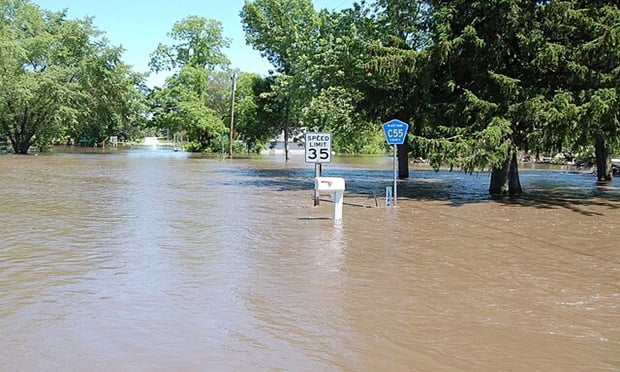It has been said that a picture is worth a thousand words. When it comes to insurance claims it can be worth thousands of dollars.
During my tenure as a quality assurance director for a large multinational insurer, I was surprised at the frequency of claims files lacking a quality scene investigation. In many cases, even a trip to Bing Maps or Google Earth would have sufficed, but even these were conspicuously absent.
Coming from a school where scene investigations weren't optional, it was always frustrating to see so much money left on the table as the result of incomplete investigations and poor liability decisions. In many instances investigations were limited to phone calls with claim parties, who themselves may not fully understand the concept of duties owed, duties breached and comparative negligence.
Much like the X's and O's a football coach puts on a blackboard, the scene investigation provides the visual for both what happened and what should have happened. From the timing of the traffic signal to the debris and the skid marks, a trip to the scene of an accident provides much needed evidence to properly formulate a liability decision.
Consider the case of an insured making a left turn and being struck by the claimant. In far too many cases there are assessments of 100 percent liability against the insured. While this may provide an easy path to closing a claim, it is extremely rare for any accident, other than a traditional rear-ender, to be all-or-nothing propositions.
According to Jury Verdict Research, a national organization that tracks such data, rear-end auto accidents accounted for only 45 percent of auto cases adjudicated, with the remainder comprised of intersection collisions, lane changes, chain reactions, and parking lot scenarios. In other words, a lot of claims where there was shared liability.
To effectively conduct the scene investigation, it is important to gather as much information as possible. Speaking with the insured, claimant and witnesses are all key components to gathering facts. During these statements, which should be recorded with permission, questions should be geared toward not only what happened, but searching for possible liability mitigators.
As discussed in “Re-Adjusted: 20 Essential Rules to Take Your Claims Organization From Ordinary to Extraordinary,” some such questions include direction of travel, position of the sun, weather, passengers, radio volume, cell phone usage, recognition of oncoming traffic, signal malfunction or visible obstructions.
In the following example, consider the impact of a thorough scene investigation:
The claimant calls in a loss and says that they were going straight, had a green light and your insured turned in front of them. A call to the insured says that they turned left because they thought there was enough time. Far too often this is where the investigation stops. The claim notes often reflect “Insured turned left in front of claimant, insured 100 percent at fault.” But should it stop there?
Consider the following additional facts gathered during the course of the same investigation:
- The speed limit was 45 and the claimant was in the No. 3 (outermost) of three westbound lanes.
- The time of loss was 6:15 p.m. Sunset was 6:35 p.m.
- The light cycle was 60 seconds green and 10 seconds yellow with a three second delay between cycles.
- The claimant was headed due west, into the sun.
- The claimant was an 18-year-old female, who attended college and had three guest passengers.
- The claimant's radio was on and there was active conversation in the vehicle.
- The damage to the claimant's vehicle was centered in the front.
- The damage to the insured's vehicle was in the right, rear door.
Given this additional information, the investigating adjuster would consider duties owed and duties breached by each party. While the insured failed to yield the right of way, they did clearly establish control of the intersection, crossing three lanes in front of an inexperienced driver who may have been distracted. While the percentages of fault may be subjective, what is evident is that this was not a clear liability accident.
By going to the scene it is possible to visualize just how far across the intersection the insured proceeded. By canvassing, it is possible to find witnesses who may be able to point out other contributing factors such as speed. It is also possible to see that that the hedgerow between east and westbound traffic may be so tall that it impedes visibility, potentially creating municipal culpability.
In this particular case, the claimant retained an attorney. The guest passengers retained the same attorney, which would have become a conflict of interest as soon as any fault was placed on the claimant. As a fiduciary, it is incumbent upon the insurer to protect the financial interest of the insured, which can't be accomplished with a marginal investigation. This, of course, can result in actions against the insurer should there ever be a judgment in excess of the policy limits.
Basic blocking and tackling, such as scene investigations, provides adjusters with the means by which to formulate appropriate liability decisions so as to ensure accurate settlements. By getting back to basics and focusing on quality outcomes, insurers can quickly gain a competitive edge in the marketplace.
Want to continue reading?
Become a Free PropertyCasualty360 Digital Reader
Your access to unlimited PropertyCasualty360 content isn’t changing.
Once you are an ALM digital member, you’ll receive:
- Breaking insurance news and analysis, on-site and via our newsletters and custom alerts
- Weekly Insurance Speak podcast featuring exclusive interviews with industry leaders
- Educational webcasts, white papers, and ebooks from industry thought leaders
- Critical converage of the employee benefits and financial advisory markets on our other ALM sites, BenefitsPRO and ThinkAdvisor
Already have an account? Sign In Now
© 2025 ALM Global, LLC, All Rights Reserved. Request academic re-use from www.copyright.com. All other uses, submit a request to [email protected]. For more information visit Asset & Logo Licensing.








